Grow Pineapples in Containers? Absolutely! Imagine plucking a juicy, homegrown pineapple right from your patio. Sounds like a tropical dream, right? Well, it’s more attainable than you think! For centuries, pineapples have symbolized hospitality and welcome, a tradition rooted in their exotic appeal and delicious flavor. From being a rare delicacy gracing royal tables to becoming a symbol of aloha spirit, the pineapple’s journey is as fascinating as its taste.
But let’s be honest, most of us don’t live in tropical climates. That’s where this DIY guide comes in. I’m going to show you how to successfully grow pineapples in containers, regardless of your location. This isn’t just about having a cool plant; it’s about enjoying fresh, organic fruit without relying on store-bought options. Plus, it’s a fantastic way to reduce your carbon footprint and connect with nature, even in a small space. So, ditch the grocery store pineapples and let’s embark on this exciting gardening adventure together! I promise, with a little patience and these simple tricks, you’ll be enjoying your own homegrown pineapple in no time.
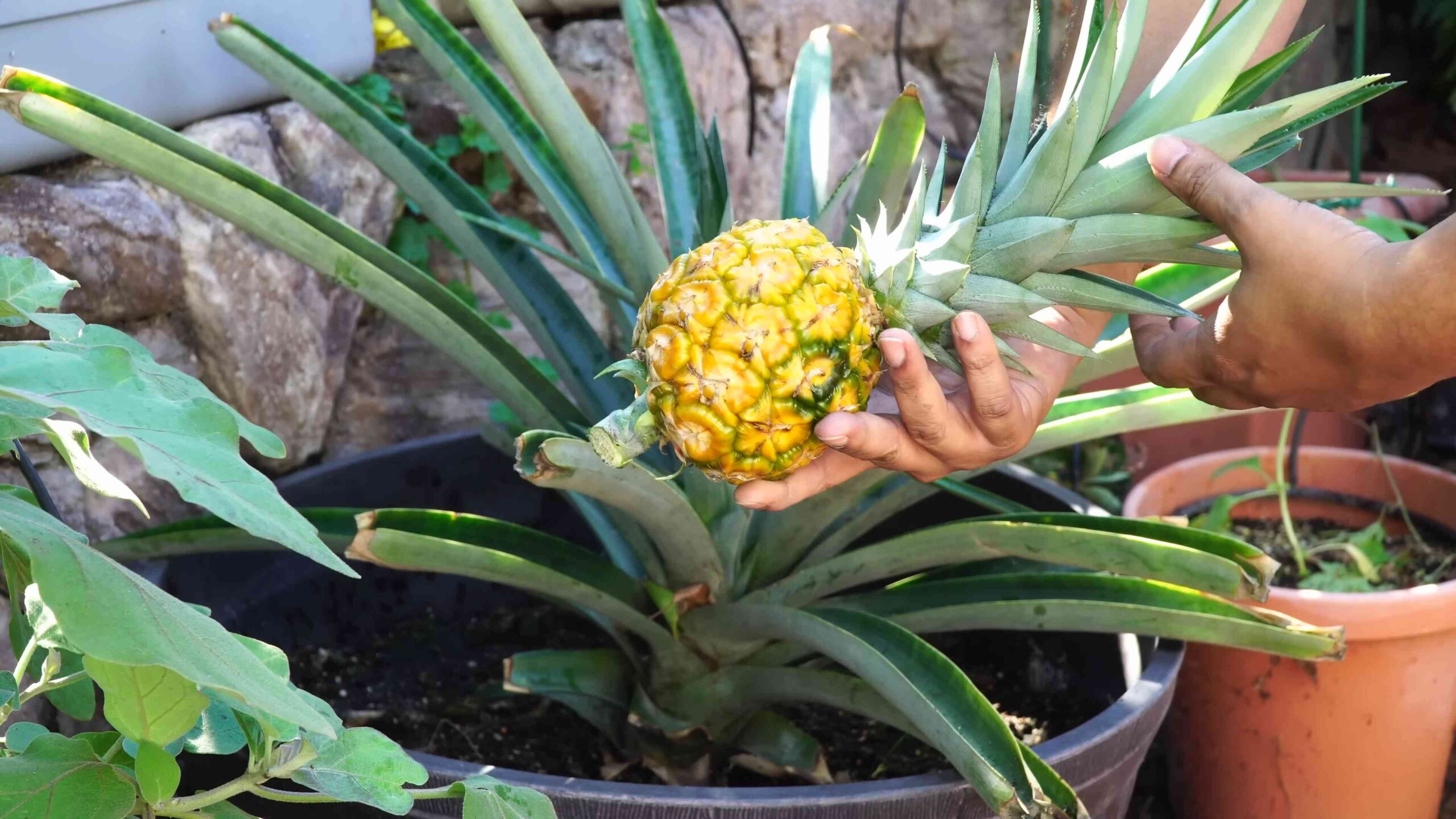
Growing Pineapples in Containers: A Tropical Treat at Home!
Hey there, fellow plant enthusiasts! Ever dreamt of harvesting your own juicy pineapple without living in a tropical paradise? Well, guess what? You can! Growing pineapples in containers is surprisingly easy and rewarding. I’m going to walk you through everything you need to know to cultivate your own spiky friend and enjoy homegrown pineapple goodness.
Choosing Your Pineapple Top
The first step to pineapple success is selecting the right starting material. You’re not going to need seeds for this project! We’re going to use the top of a store-bought pineapple.
* Look for a healthy pineapple: Choose a ripe pineapple with vibrant green leaves. Avoid pineapples with brown, wilted, or damaged leaves. The fruit itself should be fragrant and slightly soft to the touch.
* Twist or cut off the top: Gently twist the leafy top off the pineapple. If it doesn’t come off easily, use a sharp knife to cut it off, leaving about an inch of fruit attached.
* Remove the excess fruit: Carefully remove any remaining fruit from the base of the pineapple top. This is crucial because rotting fruit can lead to fungal problems and prevent rooting. You can use a knife to carefully pare away the flesh.
Preparing the Pineapple Top for Planting
Now that you have your pineapple top, it’s time to prepare it for planting. This involves removing some of the lower leaves to expose the root nodes.
* Peel away the lower leaves: Starting from the bottom, gently peel away several layers of leaves until you expose about 1-2 inches of the stem. You’ll see small brown bumps – these are the root nodes where the roots will emerge.
* Let the top dry: This is a crucial step to prevent rot. Place the pineapple top in a cool, dry place for 3-7 days. This allows the cut end to callous over, reducing the risk of fungal infections. I usually leave mine on a paper towel on the kitchen counter.
Planting Your Pineapple Top
Alright, let’s get this pineapple in some soil!
* Choose the right container: Pineapples need a pot that’s at least 10-12 inches in diameter and depth. Make sure it has drainage holes! Good drainage is essential to prevent root rot.
* Select a well-draining potting mix: Pineapples thrive in well-draining soil. A mix of potting soil, perlite, and sand works well. I usually use a 50% potting soil, 25% perlite, and 25% sand mixture. You can also use a cactus or succulent mix.
* Plant the pineapple top: Fill the pot with your chosen potting mix, leaving a few inches of space at the top. Make a hole in the center of the soil and plant the pineapple top, burying the exposed stem (where you removed the leaves) up to the base of the remaining leaves.
* Water thoroughly: Water the newly planted pineapple top thoroughly until water drains out of the bottom of the pot.
* Place in a sunny location: Pineapples need plenty of sunlight to thrive. Place your potted pineapple in a location that receives at least 6 hours of direct sunlight per day. A south-facing window or a sunny patio is ideal.
Caring for Your Pineapple Plant
Now comes the waiting game! But don’t worry, caring for your pineapple plant is relatively easy.
* Watering: Water your pineapple plant when the top inch of soil feels dry to the touch. Avoid overwatering, as this can lead to root rot. During the warmer months, you may need to water more frequently. In the winter, reduce watering.
* Fertilizing: Pineapples are heavy feeders. Fertilize your plant every 2-3 weeks during the growing season (spring and summer) with a balanced liquid fertilizer diluted to half strength. I like to use a fertilizer with a higher potassium content, as this promotes fruit production.
* Temperature: Pineapples thrive in warm temperatures, ideally between 65°F and 85°F (18°C and 29°C). Protect your plant from frost and freezing temperatures. If you live in a colder climate, bring your pineapple plant indoors during the winter months.
* Humidity: Pineapples appreciate humidity. If you live in a dry climate, you can increase humidity by misting your plant regularly or placing the pot on a tray filled with pebbles and water. Just make sure the bottom of the pot isn’t sitting directly in the water.
* Repotting: As your pineapple plant grows, it may eventually need to be repotted into a larger container. Repot when the roots start to outgrow the pot, usually every 1-2 years.
Encouraging Fruiting
This is where things get interesting! Pineapples can take a while to fruit, sometimes up to 2-3 years. But there’s a trick you can use to encourage your plant to flower and produce fruit.
* The Ethylene Gas Trick: Ethylene gas is a natural plant hormone that can induce flowering in pineapples. You can create ethylene gas by placing a ripe apple or banana peel upside down near the base of the plant, covering both the plant and the fruit with a clear plastic bag for a few days. Make sure the bag is sealed tightly to trap the ethylene gas.
* Repeat if necessary: You may need to repeat this process a few times, every few weeks, to encourage flowering.
* Be patient: Even with the ethylene gas trick, it can still take several months for a flower to appear. Don’t get discouraged!
Harvesting Your Pineapple
Finally, the moment you’ve been waiting for! Harvesting your own homegrown pineapple is incredibly satisfying.
* Watch for signs of ripeness: A ripe pineapple will have a fragrant aroma and a slightly soft feel. The color will also change from green to yellow or golden.
* Harvest when ripe: Once your pineapple is ripe, use a sharp knife to cut it off the plant.
* Enjoy your homegrown pineapple: Savor the sweet, juicy flavor of your homegrown pineapple! It’s a taste of the tropics right in your own home.
Troubleshooting
Even with the best care, you might encounter some problems along the way. Here are a few common issues and how to address them:
* Root rot: This is usually caused by overwatering. Make sure your pot has good drainage and allow the soil to dry out slightly between waterings. If you suspect root rot, you may need to repot your plant with fresh potting mix.
* Brown leaves: This can be caused by underwatering, overwatering, or lack of humidity. Adjust your watering schedule and increase humidity if necessary.
* Pests: Pineapples can be susceptible to pests such as mealybugs and scale. Inspect your plant regularly and treat any infestations with insecticidal soap or neem oil.
Additional Tips for Success
* Use rainwater: Pineapples prefer slightly acidic water. If possible, use rainwater to water your plant.
* Rotate your plant: Rotate your pineapple plant regularly to ensure even growth.
* Be patient: Growing pineapples takes time and patience. Don’t get discouraged if you don’t see results immediately.
Growing pineapples in containers is a fun and rewarding project that anyone can do. With a little patience and care, you can enjoy the taste of homegrown pineapple right in your own home. Happy growing!
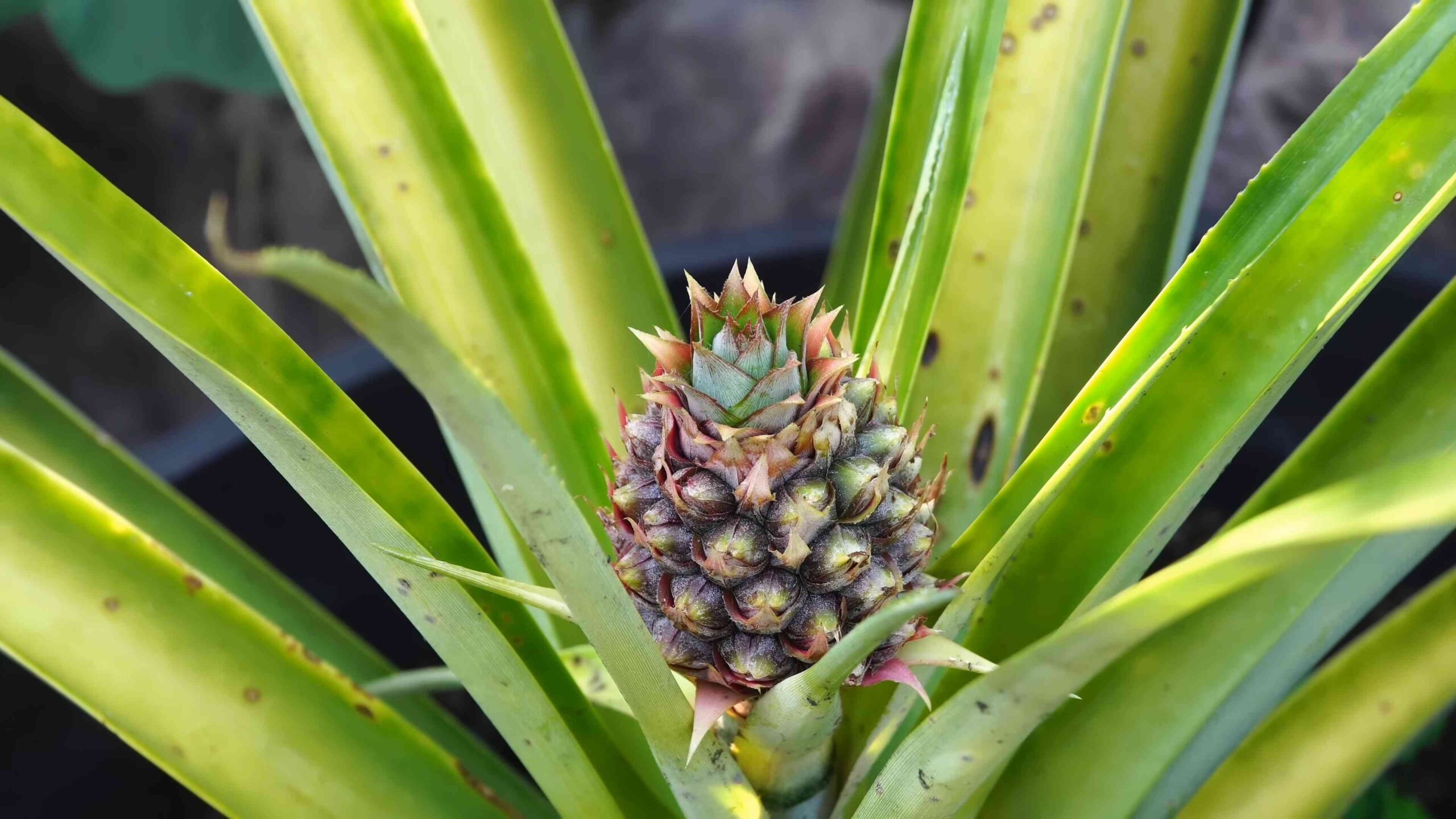
Conclusion
So, there you have it! Growing pineapples in containers might seem like an exotic endeavor reserved for tropical climates, but as we’ve shown, it’s surprisingly achievable for anyone, anywhere, with a little patience and the right approach. This DIY project isn’t just about adding a touch of the tropics to your home; it’s about experiencing the unique satisfaction of nurturing a plant from start to finish and ultimately harvesting your own delicious fruit.
Why is this a must-try? Because it’s more than just gardening; it’s an experiment in resourcefulness, a lesson in patience, and a conversation starter all rolled into one. Imagine the look on your friends’ faces when you tell them you grew your own pineapple! Beyond the bragging rights, you’ll also enjoy the benefits of fresh, homegrown fruit, free from the pesticides and long-distance transportation associated with store-bought pineapples. Plus, the pineapple plant itself is a beautiful and architectural addition to any indoor or outdoor space.
Ready to take your pineapple growing to the next level? Consider experimenting with different varieties. While smooth cayenne is a popular choice, you might also try growing a ‘MD-2’ or a ‘Red Spanish’ pineapple for a unique flavor profile. You can also play around with different container sizes and soil mixes to see what works best for your specific environment. Some gardeners even add a layer of mulch to help retain moisture and suppress weeds.
Don’t be afraid to get creative with your pineapple growing setup. If you live in a colder climate, you might want to invest in a grow light to supplement natural sunlight during the winter months. You can also use a heat mat to keep the soil warm, especially during the initial rooting phase. Remember, the key to success is to provide your pineapple plant with the warmth, sunlight, and well-draining soil it needs to thrive.
We’ve covered the basics, but the real learning comes from doing. So, grab a pineapple top, prepare your container, and embark on this exciting gardening adventure. We are confident that you will be able to grow pineapples in containers successfully. Don’t be discouraged if your first attempt isn’t perfect. Gardening is all about learning and adapting.
We’re eager to hear about your experiences! Share your photos, tips, and challenges in the comments below. Let’s create a community of pineapple enthusiasts and learn from each other. Happy growing!
Frequently Asked Questions (FAQ)
How long does it take to grow a pineapple in a container?
Patience is key when growing pineapples. From planting the crown to harvesting a ripe fruit, it typically takes anywhere from 2 to 3 years. The exact timeframe can vary depending on factors such as climate, sunlight exposure, and the specific variety of pineapple. Don’t be discouraged by the wait; the anticipation makes the eventual harvest all the more rewarding! Remember to provide consistent care, including adequate watering, fertilization, and protection from extreme temperatures, to encourage healthy growth and fruit production.
What is the best type of container for growing pineapples?
Choose a container that is at least 12 inches in diameter and 12 inches deep. This will provide ample space for the pineapple’s root system to develop. The container should also have drainage holes to prevent waterlogging, which can lead to root rot. Terracotta pots are a good option as they allow for good air circulation, but plastic containers are also suitable and can help retain moisture. Consider the weight of the container as well, especially if you plan to move it indoors during colder months. A sturdy container is essential to support the weight of the mature plant and the developing fruit.
What kind of soil is best for growing pineapples in containers?
Pineapples thrive in well-draining, slightly acidic soil. A mixture of equal parts potting soil, perlite, and peat moss is a good starting point. The perlite improves drainage, while the peat moss helps retain moisture and provides acidity. Avoid using heavy clay soil, as it can become waterlogged and suffocate the roots. You can also amend the soil with compost or other organic matter to provide additional nutrients. Regularly check the soil pH and adjust as needed to maintain a slightly acidic level (around 6.0).
How often should I water my pineapple plant?
Water your pineapple plant regularly, especially during the growing season (spring and summer). Allow the soil to dry out slightly between waterings, but avoid letting it dry out completely. Overwatering can lead to root rot, so it’s important to strike a balance. In the winter, reduce watering frequency as the plant’s growth slows down. Always water at the base of the plant, avoiding getting water in the crown, which can cause it to rot. Monitor the plant’s leaves for signs of underwatering (wilting) or overwatering (yellowing).
How much sunlight does a pineapple plant need?
Pineapples need plenty of sunlight to thrive. Aim for at least 6 hours of direct sunlight per day. If you’re growing your pineapple indoors, place it near a sunny window or supplement with a grow light. Insufficient sunlight can result in slow growth and reduced fruit production. Rotate the plant regularly to ensure that all sides receive adequate sunlight. During the hottest part of the day, especially in summer, you may need to provide some shade to prevent the leaves from scorching.
Do I need to fertilize my pineapple plant?
Yes, fertilizing your pineapple plant is essential for healthy growth and fruit production. Use a balanced fertilizer (e.g., 10-10-10) diluted to half strength. Fertilize every 2-3 months during the growing season. Avoid over-fertilizing, as this can damage the plant. You can also use a foliar spray to provide additional nutrients directly to the leaves. Look for fertilizers specifically formulated for bromeliads, as they are well-suited for pineapples.
How do I know when my pineapple is ripe?
Determining when a pineapple is ripe can be tricky, but there are several indicators to look for. The pineapple should have a vibrant color, ranging from green to yellow, depending on the variety. The fruit should also have a sweet aroma. Gently tug on one of the leaves near the top of the pineapple; if it comes out easily, the pineapple is likely ripe. You can also tap the pineapple; a ripe pineapple will have a dull, hollow sound. Avoid picking the pineapple too early, as it will not ripen further off the plant.
Can I grow a pineapple from a store-bought pineapple?
Yes, you can absolutely grow a pineapple from a store-bought pineapple! This is the most common and easiest way to start a pineapple plant. Simply cut off the crown (the leafy top) of the pineapple, remove the lower leaves to expose the stem, and allow the stem to dry for a few days to prevent rot. Then, plant the crown in well-draining soil and water regularly. With patience and proper care, the crown will root and eventually grow into a new pineapple plant.
What are some common problems when growing pineapples in containers?
Some common problems include root rot (caused by overwatering), mealybugs, and scale. Root rot can be prevented by using well-draining soil and avoiding overwatering. Mealybugs and scale can be treated with insecticidal soap or neem oil. Regularly inspect your pineapple plant for signs of pests or diseases and take action promptly to prevent them from spreading. Providing adequate sunlight, proper watering, and good air circulation can also help prevent many common problems.
Can I grow a pineapple indoors year-round?
Yes, you can grow a pineapple indoors year-round, especially if you live in a colder climate. However, you’ll need to provide the plant with adequate sunlight, either through a sunny window or a grow light. You’ll also need to maintain a warm temperature and humidity level. Consider using a humidifier to increase humidity, especially during the winter months when indoor air tends to be dry. With proper care, you can successfully grow a pineapple indoors and enjoy the beauty of this tropical plant year-round.


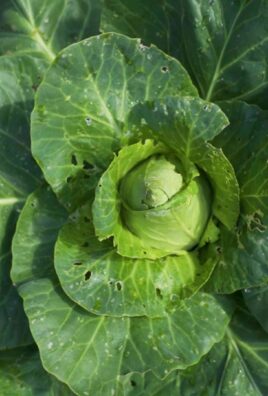
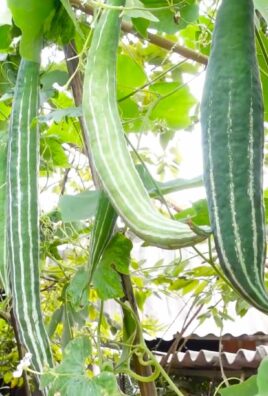
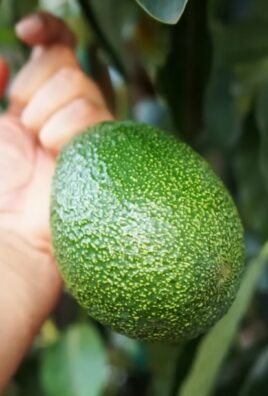
Leave a Comment